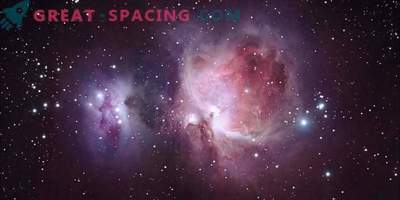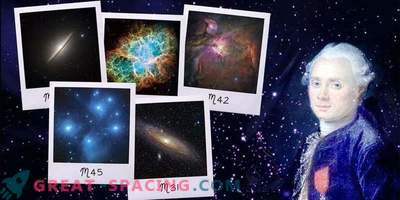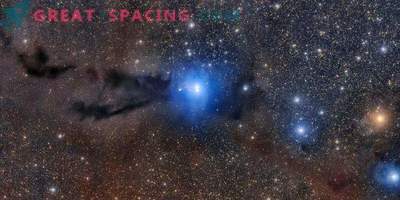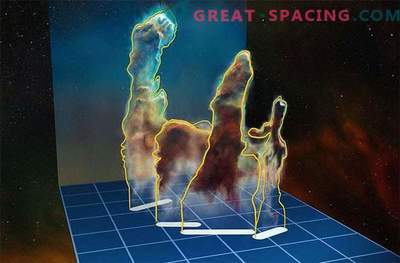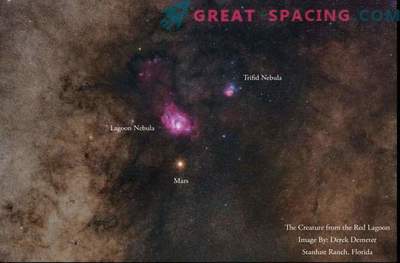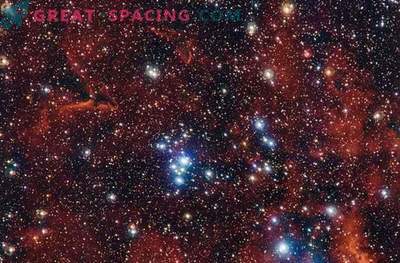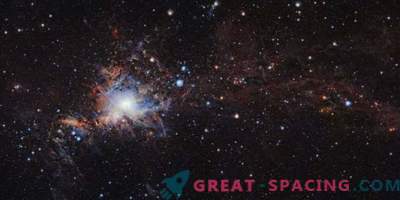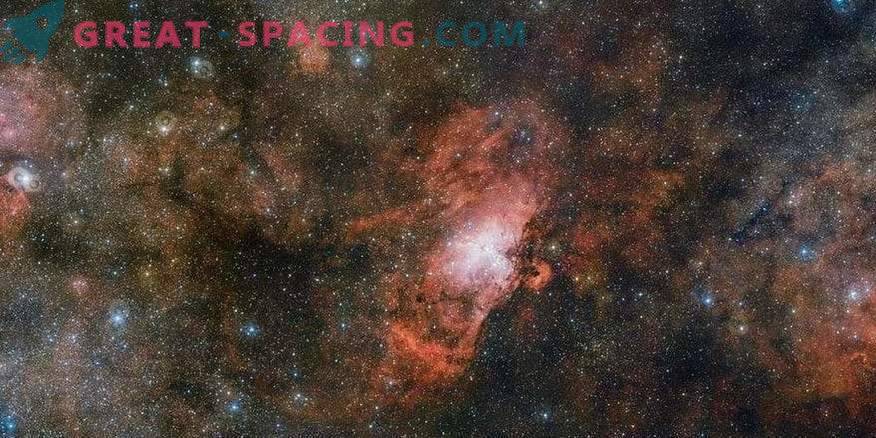
Two famous celestial objects divide the area with the less popular VST telescope. On the right is the gas cloud Sh 2-54, in the center is the Eagle Nebula (M16), on the left is the Omega Nebula (M17)
Cloud Sh 2-54, Orel and Omega Nebulae are located in 7000 light years. The first belong to the constellation Snake, and the last - Sagittarius. In this galactic area is a large cloud of stellar material. Three nebulae point to the point where clouds have concentrated and collapsed. As a result, they formed new stars. Powerful stellar radiation illuminates the gas and causes it to also glow, which is why we see a pink tint.
The first two objects revealed thanks to bright star clusters. Sh 2-54 in 1784 was discovered by William Herschel. He referred it to his catalog as NGC 6604. The gas cloud remained unknown until the 1950s, until Stuart Sharpless found it in archival images. In the 1745-1746-ies. The Eagle Nebula was noticed by Jean-Philippe de Sheso (NGC 6611). A few decades later, Charles Messier, who cataloged the object as M16, followed the area.
Omega nebula was also observed by de Chezaux and recorded in 1745. But his catalog was not well known, so the object is more commonly known as M17 (Messier opened in 1764).
This image is made by VST Paranal Observatory. For the mosaic used 10 separate images.
